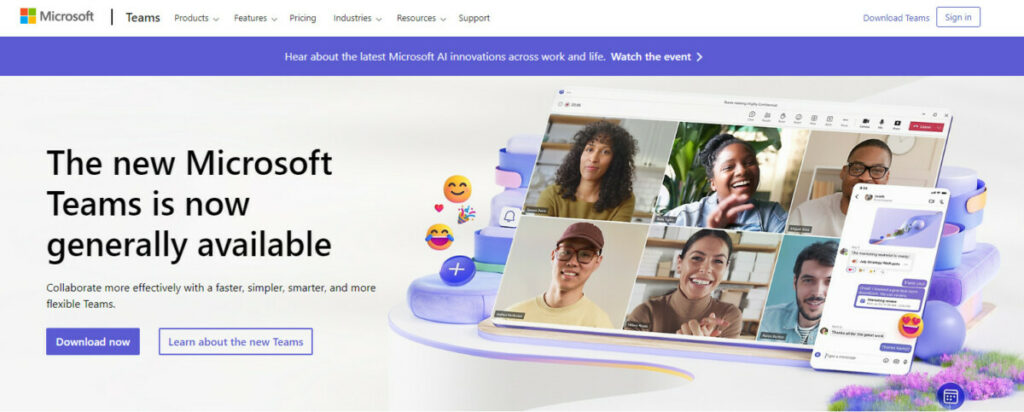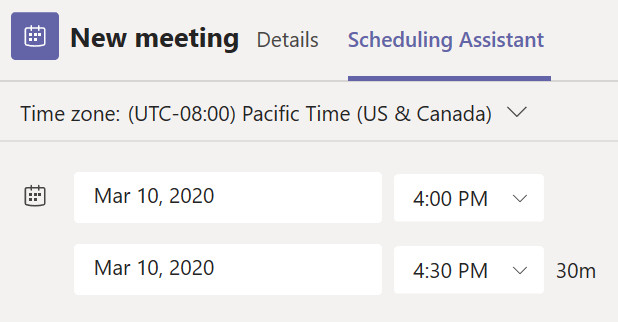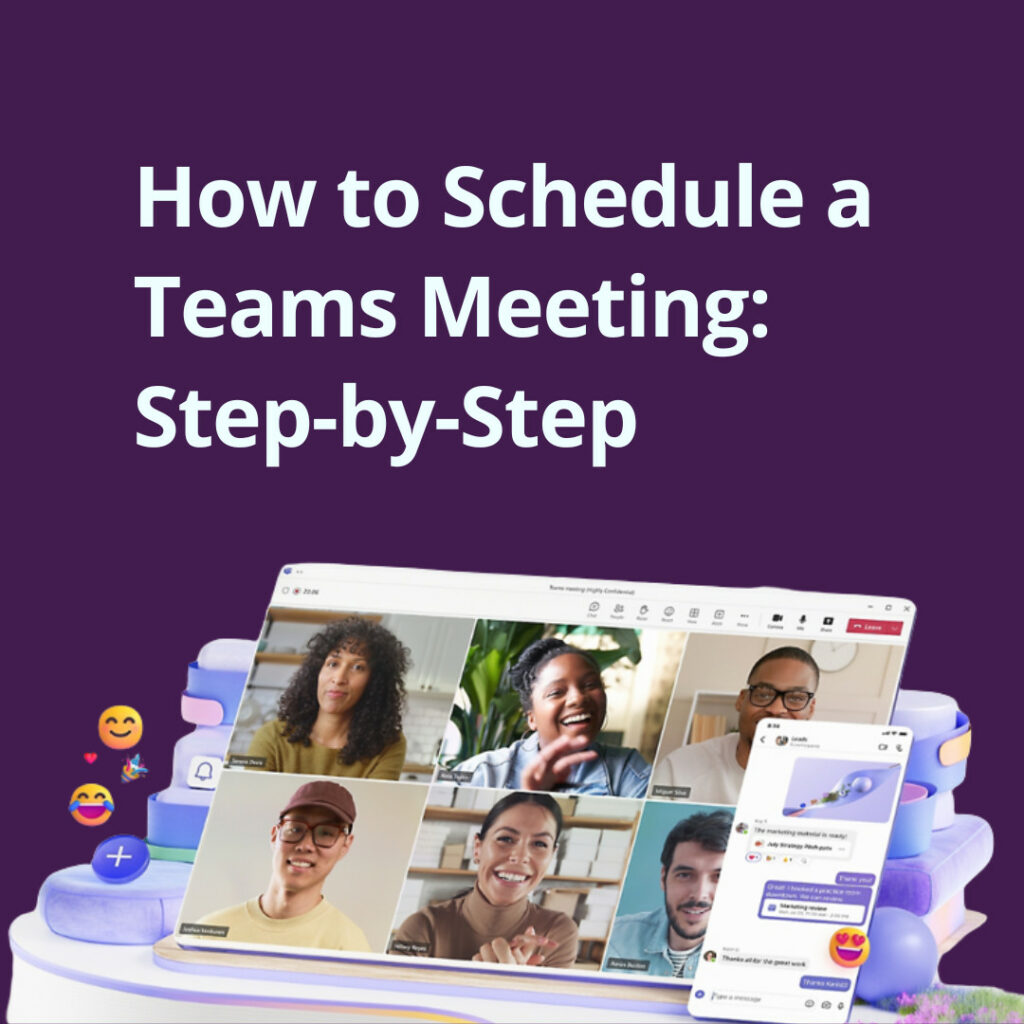Scheduling meetings has been an integral part of the corporate world for decades. But as the global landscape shifts to a more digitized environment, the ways in which we organize and attend these meetings have evolved. Microsoft Teams, a flagship collaboration tool from Microsoft, is at the forefront of this transformation. Let’s delve deep and explore how to schedule a Teams meeting.

What is Microsoft Teams?
Before diving into the process, it’s essential to understand Microsoft Teams. Teams is a part of the Microsoft 365 suite that offers chat, video conferencing, file storage, and integration with other Office apps. It’s the successor to Skype for Business and has gained immense popularity due to its robust features and integrations.
Benefits of Using Microsoft Teams for Meetings
Teams provide an integrative platform that allows businesses to host 1-on-1s as well as group conferences efficiently. The application hosts dozens of features designed to improve remote team collaborations. Organizing all interactions in a single shared workspace makes it more convenient for members to connect, thereby significantly boosting productivity.
So, why should you use Teams for your meetings? Here are some compelling reasons:
- Integrated Office Suite: Easily share and collaborate on Word, Excel, PowerPoint files, and more.
- Security: Teams come with advanced security features to keep your data safe.
- Device Compatibility: Available on Windows, macOS, iOS, Android, and web.
- Advanced Meeting Features: Screen sharing, recording, live captions, and breakout rooms.
So, How to Schedule a Teams Meeting?
Scheduling a Teams meeting can be broken down into a series of steps. Here’s a detailed guide:
1. Access Microsoft Teams
You can access Teams through the Microsoft Teams web application or by downloading the desktop/mobile application.
2. Navigate to the Calendar
On the left sidebar, click on the ‘Calendar’ tab. This will display your scheduled meetings and availability.
3. Schedule a New Meeting
Click on the ‘New Meeting’ button (typically located at the top right).
4. Fill in Meeting Details
- Title: Provide a descriptive name for your meeting.
- Date and Time: Specify the start and end times.
- Location: This will default to ‘Microsoft Teams Meeting’. You can also add physical locations.
- Details: Include the meeting agenda or other essential details.
- Invitees: Add the email addresses of all participants.
5. Advanced Settings
Click on ‘More Options’ to access advanced settings:
- Channels: If you want your meeting to be in a specific Teams channel, specify it here.
- Recurring Meeting: For regular meetings, choose the frequency (daily, weekly, etc.).
- Lobby Bypass: Decide who can bypass the meeting lobby.
- Announcement: Choose if an announcement is made when someone joins or leaves.
6. Send Invitations
Once all details are filled, click on ‘Send’. Invitations will be sent to all participants, and the meeting will be saved to your Teams calendar.
Useful Tips for a Productive Microsoft Teams Meeting

- Use Video: Turn on your camera to foster a more personal connection.
- Stay Muted When Not Speaking: This prevents background noise.
- Use the ‘Raise Hand’ Feature: If you have something to say, this allows you to indicate without interrupting.
- Record the Meeting: If permitted, recording can help those who couldn’t attend or need a recap.
- Leverage Chat: Share links, notes, or quick messages without speaking.
- Use Scheduling Assistant: Find the best time for everyone.
- Connect to Weezly: For the best scheduling experience.
Wrapping Up
In the modern era of remote work and digital collaboration, tools like Microsoft Teams have become indispensable. Scheduling a Teams meeting is straightforward once you get the hang of it. With this guide, you’re well on your way to mastering this essential skill.
Remember, the key to any successful meeting, whether virtual or in-person, is preparation, clear communication, and mutual respect. Equip yourself with the right tools, knowledge, and etiquette, and you’re sure to make the most of every meeting you schedule.

Frequently Asked Questions (FAQ) about Scheduling a Microsoft Teams Meeting
1. Do I need a Microsoft 365 subscription to schedule a Teams meeting?
While having a Microsoft 365 subscription offers enhanced features and capabilities, Microsoft does provide a free version of Teams. With this version, you can still schedule and participate in meetings.
2. Can non-Teams users join a Teams meeting?
Yes, guests can join a Teams meeting without having a Microsoft Teams account. They can join via the web without downloading the Teams app, though the app provides a more comprehensive experience.
3. How can I make my Teams meeting more secure?
There are several ways:
- Use a Meeting Lobby: This ensures only invited participants can join.
- Enable Multi-Factor Authentication (MFA): This adds an extra layer of security for sign-ins.
- Limit Screen Sharing: Only allow necessary participants to share their screen.
- Avoid Sharing the Meeting Link Publicly: Send invites directly to participants.
4. Is there a limit to the number of participants in a Teams meeting?
As of my last update, Microsoft Teams allows up to 1,000 participants in a single meeting with full interactive capabilities. For view-only attendees, this number goes up to 10,000. Always check Microsoft’s official documentation for the most up-to-date information.
5. How do I enable meeting recordings?
During the meeting, click on the three-dot menu icon (ellipsis) and select “Start recording.” Participants will be notified that the recording has started. Ensure you have the necessary permissions to record and inform participants ahead of time.
6. Can I schedule a Teams meeting directly from Weezly?
Yes, just sync your Teams with Weezly and enjoy.
7. Are there any plugins or integrations that enhance Teams meetings?
Microsoft Teams supports a wide range of plugins and integrations. You can add apps directly from the Teams store, which can enhance meetings with polls, surveys, project management tools, and more.
8. I’m facing audio/video issues in my Teams meeting. What should I do?
Firstly, check your device’s input and output settings. Ensure no other applications are using your microphone or camera. If the issue persists, consider using the web version of Teams or restarting the app.
9. How long are Teams meeting recordings stored?
For meetings recorded to Microsoft Stream, they are retained indefinitely by default. However, retention policies can be adjusted by an organization’s IT administrator. Always check your organization’s specific policies.
10. Can I customize the background in a Teams video call?
Yes, Microsoft Teams offers a “Background Effects” feature, allowing users to blur their background or replace it with an image. Some predefined images are available, or you can upload your own.
I hope this FAQ section addresses the most common concerns users have about scheduling and managing Microsoft Teams meetings. Always refer to Microsoft’s official Teams documentation for detailed insights and updates.









